


Home Energy Water Work Economy Solution Politics Team Product Recycling Cars Ships Aircrafts Promotion
World Pollution Air Weather Violence Women Weapons Psychology Plants Animals Food Peace Faith Imprint
Cars
Electric - Cars
Beautiful they are, like from a Sci Fi movie. Customers want it that way and we have to build it that way, says the German Federal Minister for the Environment, Nature Conservation and Nuclear Safety.
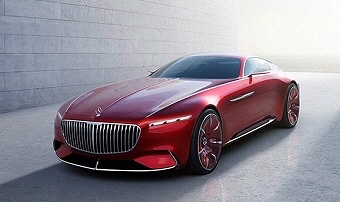
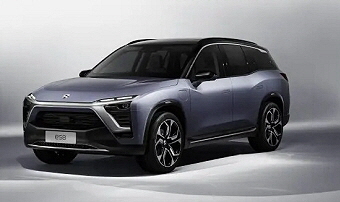
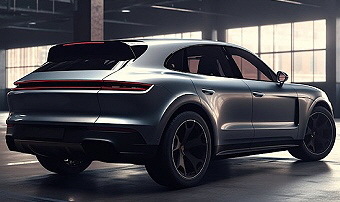
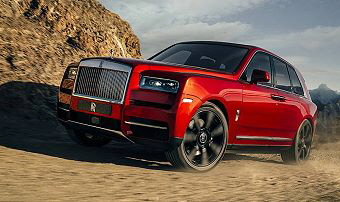

But is that really true? Do we really want that? Or do we think we want this, cause the advertising say it to us? Do we know the whole truth about these types of vehicles? I do not think so and I can not enlighten you completely on these short pages. It would therefore be wise to inform yourself sufficiently. I'll give you some food for thought here. It's not difficult to see that these vehicles are just as big and heavy as the previous ones, so they consume the same amount of fuel as the old gasoline vehicles. However, their carbon footprint is so poor during production that you could drive an equivalent gasoline vehicle 100,000 km before reaching the same carbon footprint. Only then would the electric vehicle start saving CO2. So, with such a vehicle, you don't produce less CO2; you produce more!
What you really want
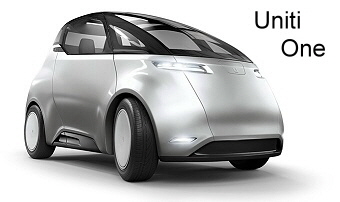
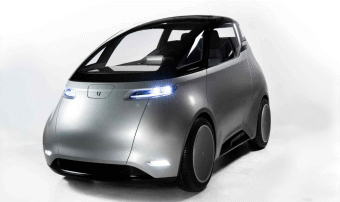
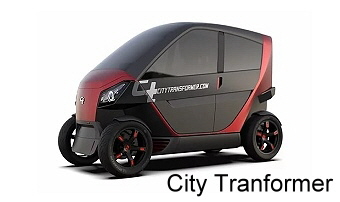


Uniti One unfortunately is not going into production because the demand statistics are too low, a production would not be worthwhile.
In advertising you get shown, that you are a great guy with a big and fat car, successful, wow cool, and you will definitely get an great female with it. For the woman it may be an SUV, in it she can feel safe and sublime. Embassies that turn off your rational thinking, the reason why advertising is actually personal injury and must be banned. because they selling you something, that past your brain and what you do not really want. What you really want is to be accepted and you want to live, you want to save CO2, you want to protect yourself, your house and your family. You want to prevent bad catastrophes like the emerging tornadoes in the interior that rage like nuclear bombs.That's what you really want, because you're not an idiot, but you definitely can not achieve this with a big and fat car.
So, what you really want, I suggest to you right now, is a little car. You really save CO2, you're a great and responsible person, you protect your family and you are admired by everyone. The link to the page is in the middle of the picture. But before you go shopping now, unfortunately we still have to talk about the battery. The material for this is being brought in different poor countries from the ground. In the so-called "lithium triangle" between Bolivia, Argentina and Chile. Lithium is an alkali metal that is won in an evaporation process. For this purpose, the mineral-containing groundwater is pumped into huge basins. Under the hot desert sun, it then evaporates, causing different salts gradually settle in the pelvis. This salt solution is then transformed into lithium carbonate in a chemical process.
The poorest pay your battery with their lives. Do you like this?
This consumes vast amounts of water that does not exist in these regions, the water table is therefore falling. The poor people in this area are damaged. They have no water, they can not plant anything, they starve and die of thirst. Untreated sewage contaminates the whole area. The poor get nothing from the high profits they make with the metal. The manufacturing companies are robbing these people as usual.
Electric cars from child labor: Cobalt mining in Congo
Cobalt can be found in countries like China, Canada and Australia. However, 48 percent of the world's reserves are in the Democratic Republic of the Congo. 60 percent of the world's demand for cobalt comes from mines in the Central African country. They produce a lot of 84,400 tons of the metal. Of these, 18,000 tonnes, or around 20 percent, come from illegal small mines. Because only children are small enough to crawl holes in the mines, they are forced to mining. The same as always in the official mines. The environment is polluted, the poor are suffering and of course they have no share in the powerful profits of the corporations. What begins now is the mining of metals on the seabed. This is dangerous and will surely disturb the ecology on the seabed. I do deliberately NOT use the words: "could" or "possibly". For two reasons: I am not afraid of the power of the industry, I know that I will be sued in case of doubt. But I also have enough life experience in an industrialized country to know exactly that the endangerment of nature, in favor of the acquisition of property, is accepted with approval.
For the sea creatures is it as like for you if anyone is driving with a caterpillar through your living room.
Hydrogen fuel cell vehicles
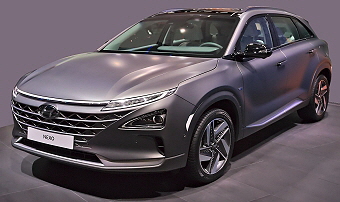

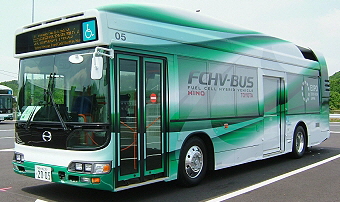
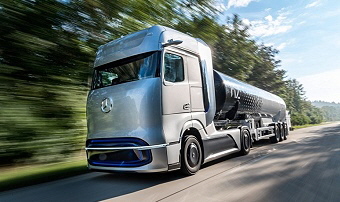
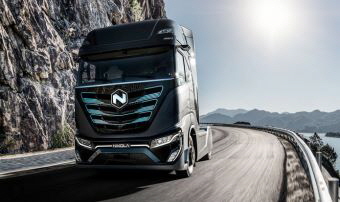
Should now be the ultimate solution. But is that really true? Ranges of up to 600 km are easily possible even with heavy trucks, the tank is full again in a few minutes and only water vapor is produced when hydrogen is converted into electrical energy.
But let's first ask the host what he makes for a bill: The efficiency in the production of hydrogen from electrical energy by means of electrolysis initially sounds relatively good at 75% -80% (1st law of thermodynamics - conservation law of energy), but the decisive factor is the second law which not only considered the amount of energy, but also considered the different valency of the energy. When considering the second law, high-quality electricity is converted into the simple fuel hydrogen and thus irreversibly devalued. According to this second law, the production of hydrogen from electrical energy is 3-4 times more energy-intensive than conventional production from the equally simple fuel natural gas. What does this mean specifically?
Test result: Conversion of electrical energy into hydrogen -and- hydrogen into electrical energy:
Only 13 -15% of the electrical energy taken from the network could be fed back; 85% to 87% of the electrical energy was lost during the conversion of electrical energy into hydrogen and the conversion of hydrogen back into electrical energy in the 2003 experiment at the FTZ in Büsum.
The production of hydrogen from natural gas is a standard process and has been used successfully for many years. These processes are called reforming, but this process produces not only hydrogen but also carbon monoxide CO, carbon dioxide CO2 and nitrogen N² in not insignificant quantities. The efficiency (natural gas to hydrogen) is around 60 to 70%.
The Federal Government of the Federal Republic of Germany now wants to use 9 billion euros to produce hydrogen, 2 billion of them in Morocco, where the first industrial plant for "green hydrogen" would be built in Africa. The aim of the project is to show how green hydrogen can be produced industrially and competitively, 5 GW by 2030 and 10 GW by 2040, according to Federal Minister for Economic Affairs and Energy Peter Altmaier (CDU).
An excellent idea, 10 gigawatts sound like a decent sum, as well as the use of 9 billion euros, but this is only 1/7 of the current need and this will not be until 2040, certain goals in 2050 will not be achieved in this way.
It's like saying to the seller at the meat counter: "Please give me a steak, I'm having a party tonight, but please a small one, there are only 60 people coming."
Conclusion: It would be much better to build up an international energy network and to produce hydrogen on site, where it is needed, we should tackle that and not spend 9 billion, but rather 9 trillion euros. Otherwise we only produce more CO2 with the hydrogen.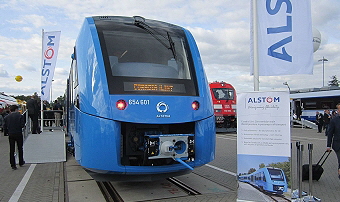
Regional trains are already operated with fuel cell technology.
Assume a conversion of the motor vehicles, there are 58.2 million registered vehicles in Germany alone, in 2030 the global inventory of motor vehicles will be ~ 1.6 billion with a steady growth rate, and we would use fuel cell technology everywhere, the world energy requirement would, only in road traffic, increase at ~ 90%. So we should quickly start building sun power plants.
Batteries are not absolutely necessary !
In Tel Aviv, Israel is building a completely different type of supply for electric vehicles. The first test track, initially only for buses, is currently under construction.
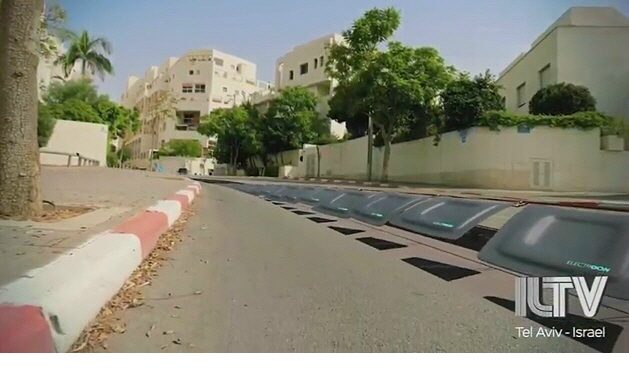
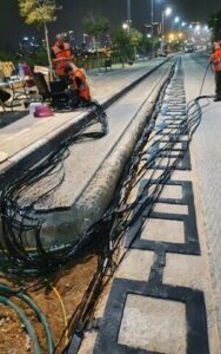
By means of induction, the vehicle is supplied with electrical energy by coils in the roadway. In this way, a large battery is no longer needed in the buses, this reduces the ecological footprint many times over, there are no long charging times, and costs are minimized.
The main roads into the suburbs should be supplied first, as these routes are used the most and this is where the savings potential is greatest.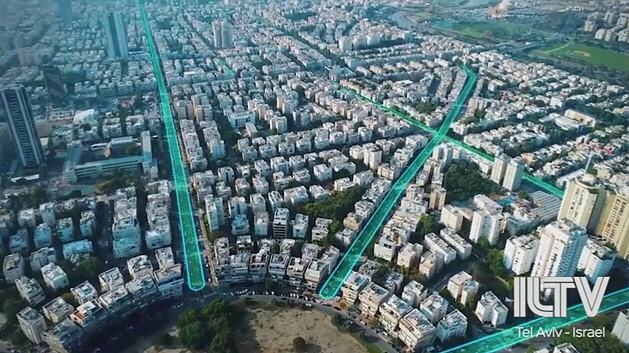

Later on, the application can and should also be usable for private transport. The related tests are already running. Because not only the energy can be transmitted in this way, but also data. The vehicles can communicate with a network and vice versa. In this way, the application can not only optimize performance, analyze errors and much more, but can also be included directly in traffic planning in order to show the driver of the respective vehicle the optimal route to his destination.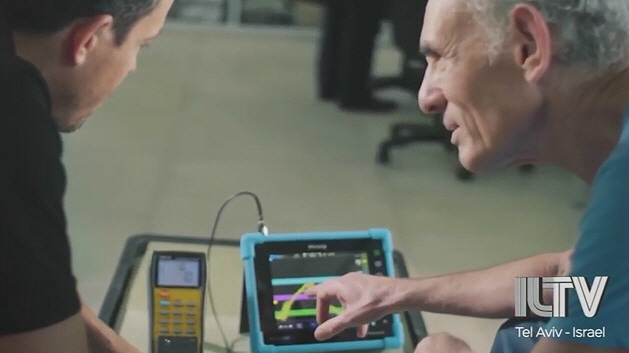
The City Tranformer
The latest product from Israel and just the right solution for our problems. Let yourself be inspired.
First Picture: Link to the movie, Second picture: Link to the website
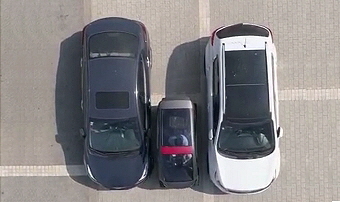
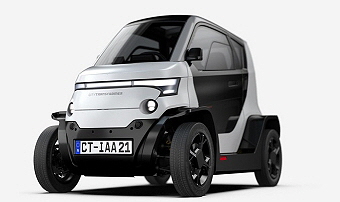

You can measure the biggest problem with electric SUVs using examples: The 1997 Porsche 911 Carrera uses 320 hp and needs 5 seconds from 0 to 100, its consumption: a whopping 11* liters per 100 km. The Jaguar I-Pace EV320 also uses 320 but electric horsepower and “oops” it needs 6.4 seconds from 0 to 100. Due to its weight, it needs a whole 1.4 seconds more, its consumption as a petrol vehicle should therefore be beyond 12 * liters per 100 km. For comparison again, a Porsche 911 Carrera from 1972. It accelerated from 0 to 100 km / h in 5.7 seconds with just 210 hp and consumed 11.7* liters. * Average values with appropriate driving style. The secret is in the weight. Our vehicles are getting bigger and heavier and therefore consume more again. What we gain through technical improvements we always use up again immediately through greater weight and even more power.
Virtually nothing changed. On the contrary:
The share of so-called renewable energies is currently only around 8% worldwide, with nuclear energy around 13.6%, so 86.4% of electrical energy must be produced from fossil fuels. The conversion of fossil fuels into electrical energy is extremely lossy , the actual consumption is therefore at least 1/3 higher and we initially produce more CO2 than with direct combustion in a vehicle.
So we will not achieve any climate goals, just like before, a "Sorry just didn't work" will not be enough this time, because nature does not accept excuses, only less CO2. Apart from the fact that these huge vehicles are totally unwieldy and take up a lot of space. We already suffer from a chronic lack of parking spaces in our cities.
The City Transormer offers the solution for every sector.
To the Top ![]()
![]()
![]()
Home Energy Water Work Economy Solution Politics Team Product Recycling Cars Ships Aircrafts Promotion
World Pollution Air Weather Violence Women Weapons Psychology Plants Animals Food Peace Faith Imprint